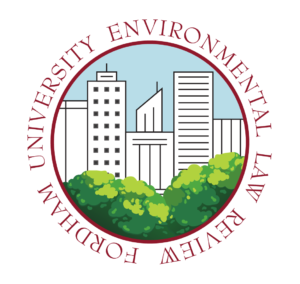Building a Greener Future – Infrastructure and Its Role in Climate Change
Conversations about environmental sustainability typically focus on how we can prevent further degradation to the remaining environment. Strategies commonly include mitigating rainforest demolition, placing restrictions on carbon emissions, and classifying certain lands as protected areas. While successful, these strategies solely focus on protecting the remaining environment. Green infrastructure, on the other hand, seeks to protect the environment by adding more to it. Green infrastructure is designed to filter and absorb stormwater where it falls, therefore reducing flow to sewage systems or to surface waters. Examples of green infrastructure include Green Roofs, Rain Gardens, and Bioswales. In addition to finding the space necessary to build these projects, densely populated and industrialized cities face a unique problem in implementing green infrastructure: how to continue growing without widening societal disparities.
Unfortunately, increasing infrastructure comes with several negative connotations: loud demolition, unsightly scaffolding, endless orange cones, and potentially hazardous debris disturbing surrounding residents. However, if we look past the potential nuisances of construction, increasing infrastructure could improve environmental sustainability and most importantly, create a city that prospers economically and environmentally.
Public Transit- The Train is Late on Change
One area where improved stormwater filtration infrastructure is desperately needed is the New York subway system. New York City’s subway system transports over 3 million people to all five boroughs every day. Datu Research report commissioned by EDF reports that the damages sustained from hurricanes and floods have quadrupled since 1980 to cost the city billions of dollars per disaster. This influx of severe weather has put New York’s subway system to the test with stairwells becoming waterfalls during floods and riders being left stranded in usually accessible areas. While short-term solutions are necessary to protect against increased storms, long-term solutions crafted over the next decade are crucial to maintaining a functional public transit system. Experts suggest building intra-city canal systems to limit the amount of water let into the subway system and enable the city to drain rainwater more effectively. However, despite the benefits, the new canals would disrupt local roadways, reroute subway lines, and likely take decades to complete. Additionally, proposing these canals has prompted all residents to wonder how this would affect their property value and quality of life, and low-income residents to wonder how these new plans would exacerbate income inequality.
One major concern with creating flood prevention infrastructure is the potential continuation of dumping unwanted water in low-income neighborhoods. The National Resources Defense Council (NRDC) reports that underfunded transit systems have backlogged $90 billion in necessary repairs due to climate-induced damage. Because of this backlog, city planners will inevitably look to the cheapest option to dump to cut costs, and lower income communities are disproportionally targeted for that. Rerouting sewage and water dumping to low-income areas puts a strain on these communities already struggling with other environmental maladies. Lower GDP communities are susceptible to becoming the home of carbon-emitting factories due to the cheap cost of building and staffing there. Additionally, the influx of excess water from rebuilt subway lines would make the residents of these communities more susceptible to sewer line disruptions that could poison residents’ drinking water. These water influxes also accelerate disastrous environmental concerns for these residents, including mudslides, water toxicity, and flooding.
As cities plan methods to reroute and prevent excess water buildup in public transit lines, it is crucial that they welcome socially conscious experts and advocates to the conversation. They would ensure that affected voices are heard to combat the tendency of these projects to provide minimal notice to communities of lower social capital, whose opinions and comments are essentially silenced. The NRDC and other non-profit organizations work tirelessly to ensure that the voices of the most affected communities are integrated into future infrastructure plans. However, because economic development and carbon emission treatment are tightly interwoven, there is little incentive for decision-makers to consider an economically struggling communities’ opinion.
Looking Ahead- New York City
The City of New York has attempted to get ahead of its massive public transit problem by creating a Green Infrastructure Plan for other coastline cities to follow. This plan includes installing rooftops aimed at collecting rainwater for vegetation and soil absorption and subsurface detention systems to retain excess rainwater. The UN advocates that cities enacting new “green” infrastructure policies must address the root policies of inequality so as not to exacerbate inequality. Nearby cities in New England, such as Boston, have applied for federal funding to protect shoreline subway lines and mitigate coastline erosion. The large-scale and federally funded green infrastructure efforts on the East Coast should guide other municipalities to create a more economically and environmentally harmonious country.

